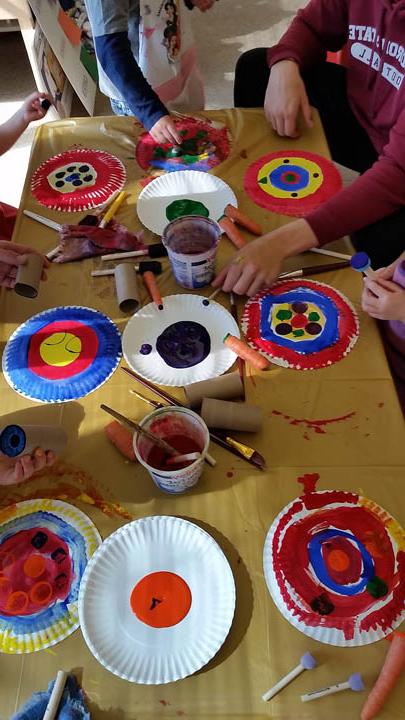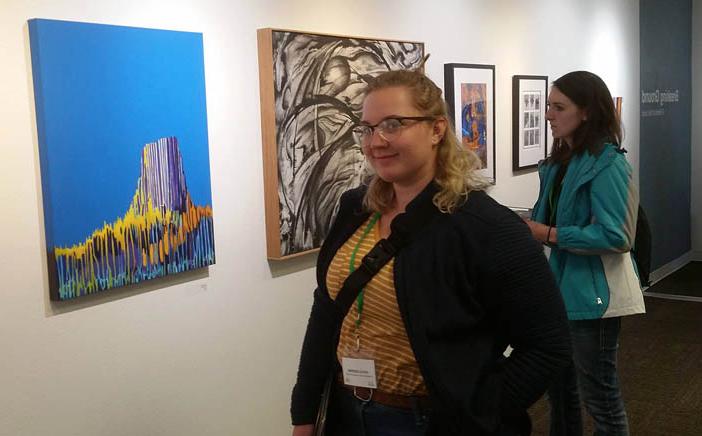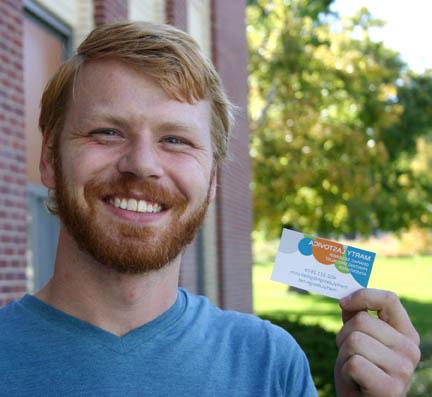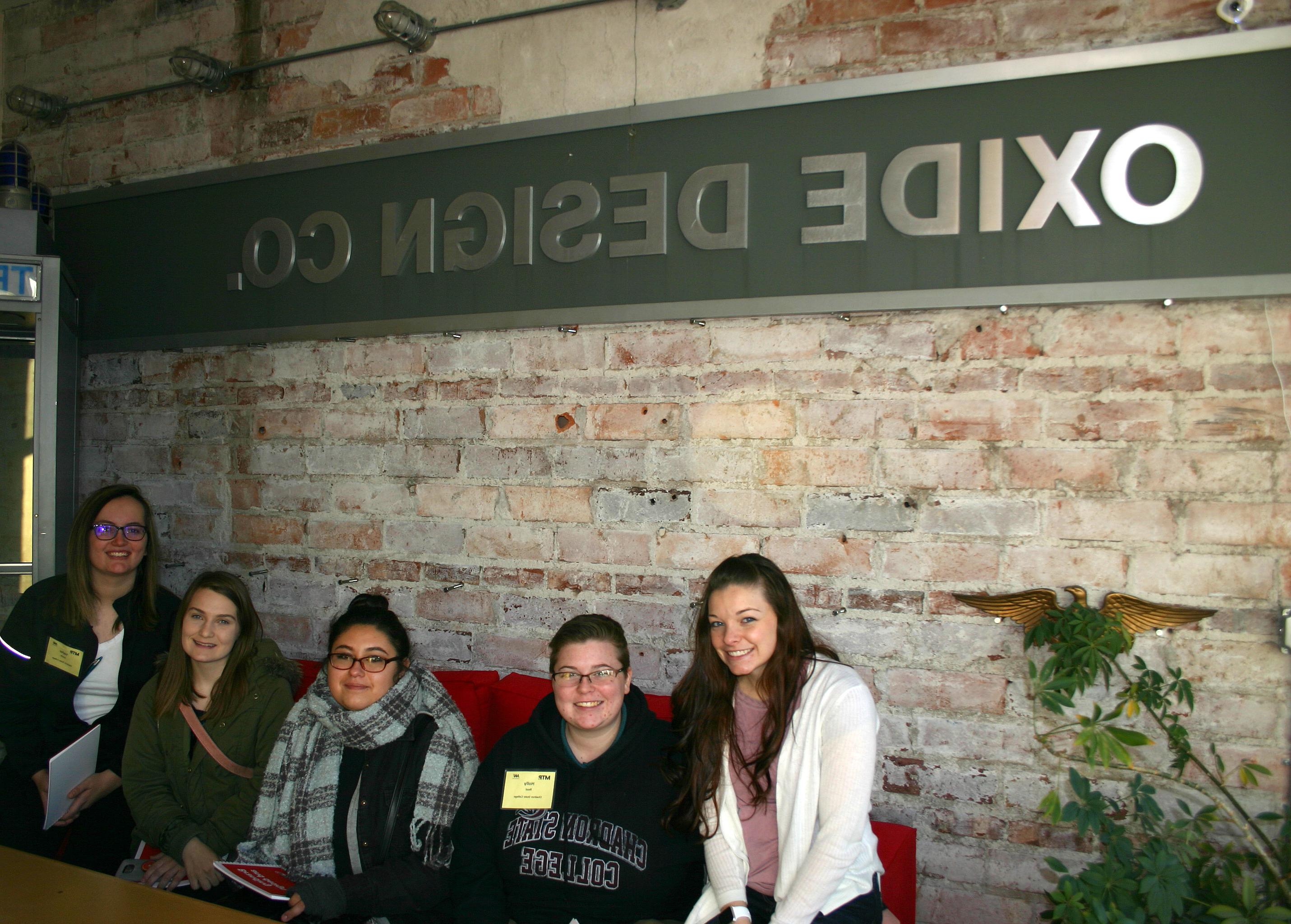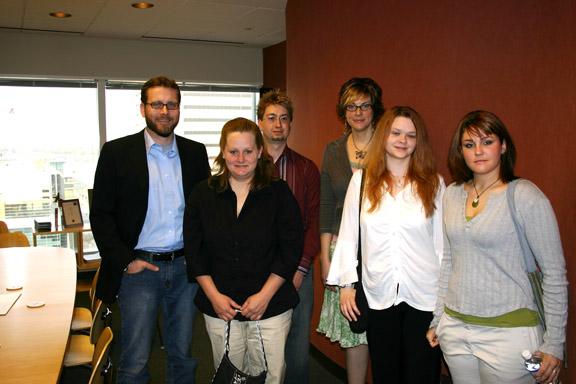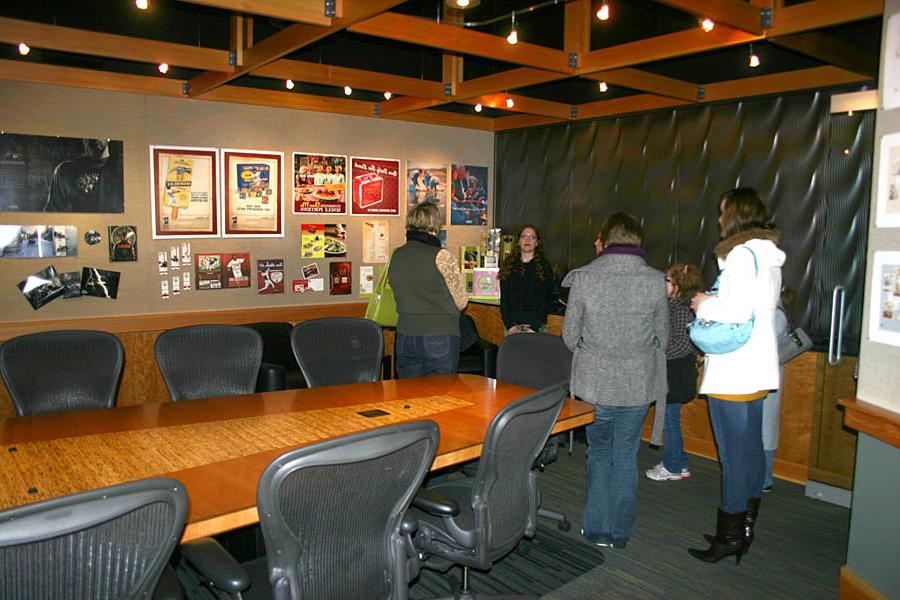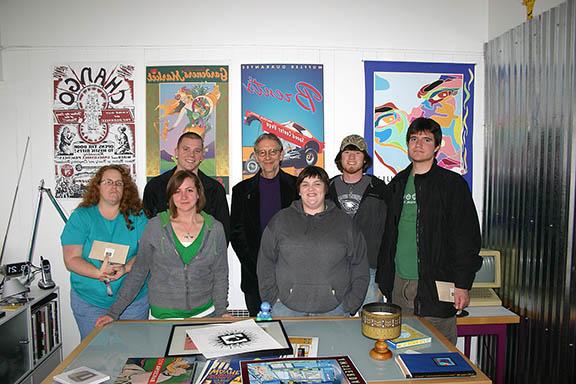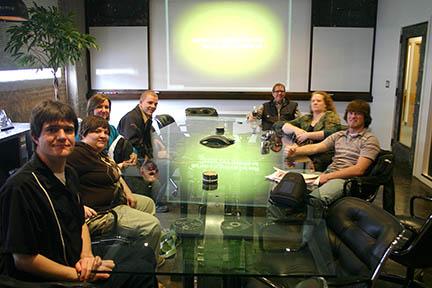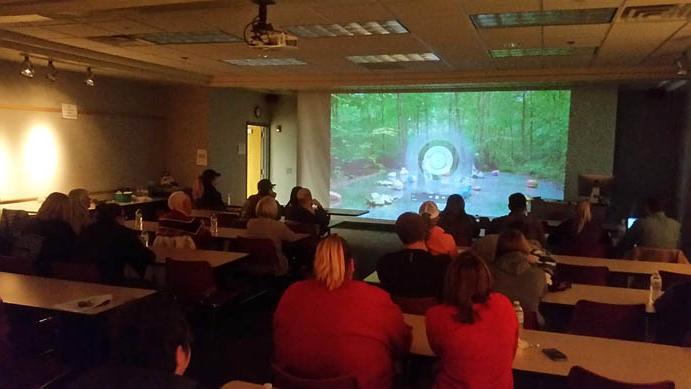Career Opportunities
Careers in Art
Create a future that allows you to use your passion, curiosity and energy to find connections and bring new visual ideas to life. There are many opportunities to use your skills and creativity in visual art in life after college. Seventy-two percent of business leaders say that creativity is the number one skill they are seeking when hiring. Many CSC Art alumni have become art educators, commercial artists, graphic designers, art entrepreneurs, and studio artists or go on to graduate school.

Art Education
Working as an art educator is a popular and rewarding career path for many artists. There are numerous regional employment opportunities for art educators and many CSC Art students have been hired to teach within the elementary, middle, and high schools. Other employment opportunities include workshop instructors and museum education. At Chadron State College, aspiring art educators learn both studio art practices and pedagogical approaches to prepare them to be highly qualified teachers who are also practicing artists.
|
CSC Art grad, Travis Hencey, has shown his work in Nebraska Arts Council and regional venues and is the Chadron High School art teacher. |
CSC Art grad, Kayla DeSersa, is a middle school art teacher in Colorado Springs, Colorado. |
|
CSC Art Education students create and teach art lessons at the CSC Child Development Center. |
CSC Art Education students in the Art Special Methods class experiment with virtual drawing in the CSC Library. |
|
CSC Art Education students attend the South Dakota Art Education Conference in Spearfish, South Dakota. |
Why is Art Education Important?
Art education is vital need for students of all ages. Research shows arts education increases student motivation and attendance as well as improving academic achievement. Students benefit from comprehensive and sequential learning in the visual arts from qualified teachers who are certified in art education. The visual arts are a universal language contributing to multi-cultural understanding in a global society and helping to enrich human experience and fulfill human potential.
- www.arteducators.org
- www.nebraskaarteducators.org
- www.americansforthearts.org/by-topic/arts-education
- www.arteducators.org/research/art-education-journal
If you would like to visit in-person about our art education program, contact
Trudy Denham
Assistant Professor of Art
Chadron State College
Phone: 308-432-6326
tdenham@ngskmc-eis.net
Mailing address:
Art
Chadron State College
1000 Main Street
Chadron, Nebraska 69337
Graphic Design
One of the more popular and prosperous ways for art majors to make a living upon graduation is in the world of commercial art or graphic design. But graphic design is more than computers and software. Graphic design is the creative and intellectual process that combines visual language and technology to communicate ideas. It is the process of finding visual solutions for problems.
If you would like to visit in-person about our graphic design program, contact
Mary Donahue
Professor of Art
Chadron State College
Phone: 308-432-6325
mdonahue@ngskmc-eis.net
Mailing address:
Art
Chadron State College
1000 Main Street
Chadron, Nebraska 69337
What is Graphic Design?
“Graphic design is the most ubiquitous of all the arts. It responds to needs at once personal and public, embraces concerns both economic and ergonomic, and is informed by many disciplines, including art and architecture, philosophy and ethics, literature and language, science and politics and performance.
“Graphic design is everywhere, touching everything we do, everything we see, everything we buy: we see it on billboards and in Bibles, on taxi receipts and on websites, on birth certificates and on gift certificates, on the folded circulars inside jars of aspirin and on the thick pages of children's chubby board books.
“Graphic design is the boldly directional arrows on street signs and the blurred, frenetic typography on the title sequence to E.R. It is the bright green logo for the New York Jets and the monochromatic front page of the Wall Street Journal. It is hang-tags in clothing stores, postage stamps and food packaging, fascist propaganda posters and brainless junk mail.
“Graphic design is complex combinations of words and pictures, numbers and charts, photographs and illustrations that, in order to succeed, demands the clear thinking of a particularly thoughtful individual who can orchestrate these elements so they all add up to something distinctive, or useful, or playful, or surprising, or subversive or somehow memorable.
“Graphic design is a popular art and a practical art, an applied art and an ancient art. Simply put, it is the art of visualizing ideas.”
—Jessica Helfand, www.aiga.org/what-is-graphic-design-video
Who becomes a graphic designer? - from AIGA Career Guide
www.aiga.org/content.cfm/guide-whobecomesdesigner
What kinds of jobs are out there?
- www.creativehotlist.com
- webdesignerwall.com/general/jobs-for-designers-and-developers
- www.ucda.com/jobs
- designjobs.aiga.org/public/jobs_browse.asp
- www.authenticjobs.com
- www.behance.net/joblist
- www.coroflot.com
- www.krop.com
What kinds of salaries do designers make?
www.aiga.org/content.cfm/salary-survey
Links of interest
- www.aiga.org
- ucda.com
- www.graphis.com
- www.aaaa.org
- www.adcouncil.org
- www.adcglobal.org
- www.commarts.com
- www.printmag.com
- www.atypi.org
- www.colormarketing.org
- www.societyillustrators.org
- www.digitalthread.com
Animation
Many students express an interest in the field of animation. While CSC does not instruct specifically in animation programs, it does focus on the fundamentals of drawing and design which are the necessary foundation for animation.
At a recent Meet the Pros conference in Omaha, we talked to Jimm Wagner of Phenomblue and he suggested the following resources for those interested in learning animation.
- www.animationmentor.com (Instruction online over 18 months. It is instructed by experts from some of the biggest animation shops including Pixar and ILM. More on animationmentor below.)
- www.lynda.com (Video lessons on just about any software program out there.)
- www.thegnomonworkshop.com (Contains video lessons on 2D, 3D, animation, drawing, painting, etc.)
- www.digitaltutors.com (Contains video lessons for VFXs, 3D, and animation.)
Below are three graphic portal sites that showcase industry and personal talent along with news…
Other resources
To direct yourself towards a career in animation the information below may be helpful.
IPAX began with six schools and has expanded to 11 member schools: Animation Mentor, Carnegie Mellon, DePaul University Computer Graphics and Animation Program, Gnomon School of Visual Effects, Massachusetts Institute of Technology (MIT), Otis College of Art + Design, Pratt Institute School of Art & Design, Ringling College of Art & Design, Stanford, the University of New Mexico, and the University of Southern California School of Cinematic Arts.
Go to Animation School Wherever You Are
Another IPAX member school, Animation Mentor, based in Berkeley, California, teaches students all over the world via the Internet. Launched in March 2005 by animators Carlos Baena, Bobby Beck (president/CEO) and Shawn Kelly, the school's curriculum is 100% dedicated to character animation and teaches the art of animation the way the founders wished they could have learned it when they were in school.
The Animation Mentor program consists of six different classes (terms) of 12 sessions each for a full course of 18 months. It is a feedback-driven, online program that is based on the studio production system and pairs animation students with working professionals (mentors). The mentors act as teachers to students from more than 50 countries all over the world.
"Animation Mentor has closed the gap between the working world and the educational process and [prepares] graduates for the cyclical world they will encounter before landing a permanent studio home," notes Beck. "With the help of my partners and our amazing team of mentors, Animation Mentor remains in close touch with the ebb and flow of the animation business, with creative trends, new tools, technologies and more."
Like the students, mentors come from all over the world, from studios such as Disney, Pixar, Dreamworks, DreamWorks/PDI, Sony, Tippett and Zoic in California, House of Cool and Nelvana in Canada, Reel FX in Texas, and Blue Sky in New York. It's possible for a student in Germany to learn basic principles like squash and stretch from an animator in California, and principles of body mechanics from an animator in Canada in the next class.
For more information about Animation Mentor, visit its www.animationmentor.com or email admissions@animationmentor.com.
Video Editing

Art Studio
What every artist wants to be … an artist
Of course the main goal of an artist is, well, to be an artist. To do their own creative work. An art major with the option of art studio focuses on learning the craft of fine art. In the Art program at Chadron State College, artists can explore drawing, painting, printmaking, design, ceramics, sculpture, fiber or experimenting with multiple mediums. Your college career is only the beginning of this lifelong process of being an artist.
|
CSC Art grad, Whitney Tewahade, is an artist, art entrepreneur, and owner of TaDa Studio and quilting studio/supply in downtown Chadron. |
CSC Art student, Kayla DeSersa works on her throwing technique. |
|
CSC Art grad, Timm Hoff, exhibits his work around the region and has been an Artist in Residence in Nebraska schools. |
|
|
CSC Art students view a special screening of Art 21, “Art in the 21st Century is a PBS documentary series featuring contemporary artists at work and in their own words. |
|
Art Alumni

Artist Scott Christensen
But it can take many years and much hard work and, in the meantime, one has to eat. A starving artist cannot starve for too long. So finding a day job (or maybe a night job) which still lets you do your art is a good idea. A job that is art-related can be inspiring.
Here are some suggestions…
- Working in a museum or gallery
www.aam-us.org
www.denverartmuseum.org
www.art-collecting.com
www.sheldonartgallery.org - Becoming an intern or assistant to an established artist
- Working in a sculpture foundry or glass studio
- Working as an arts administrator or fundraiser or for an arts council
www.arts.nebraska.gov
wyoarts.state.wy.us
www.artscouncil.sd.gov
www.artsforcolorado.org
www.coloradolinks.net
art.mt.gov
www.iowaartscouncil.org
Arts councils also offer excellent resources for artists. Check the art council sites for calls for entry for art shows. As an artist, it is important to enter your work in shows and build your résumé. Many art shows now have online digital jury services which handle digital images for art show juries. These sites also give you information about how to prepare your digital images for sending to shows.
There are many other websites with helpful information and resources for artists.
Think about what other classes you might take in college or internships you can do while as a student that would give you experience towards a future art-related job.

One route many artists take is to go on to graduate school. Graduate school allows an artist a few more years of focus and exploration to find their artistic voice (which might also help you find a market for your art.) The other advantage graduate school may offer is the credentials and experience to teach art at the college level. This usually requires a Master of Fine Arts (MFA) degree in your chosen art medium. This is the terminal degree or highest degree one can receive in art studio. Teaching allows you to be around art all day, to be inspired by your students and to have some extra time in the summer to do your artwork.
As a professional artist it is important to enter your work in shows and start building your résumé, as is the craftsmanship and constant improvement in your skill.
You can be an artist if that is your dream but it takes courage, hard work and long hours.
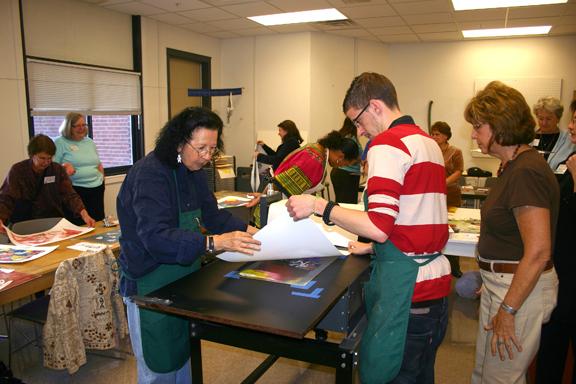
The Chadron State College Art program offers an extensive gallery exhibit schedule of professional artists from around the country as well as visiting artists who share their experience personally with students. Art students also gain experience by designing and hanging their own art shows.
The Art program at Chadron State College is here to inspire and help you become what you want to be … an artist!
If you would like to visit in-person about our studio art program, contact
Laura Bentz
Professor of Art
Chadron State College
Phone: 308-432-6324
lbentz@ngskmc-eis.net
Mailing address:
Art
Chadron State College
1000 Main Street
Chadron, Nebraska 69337



